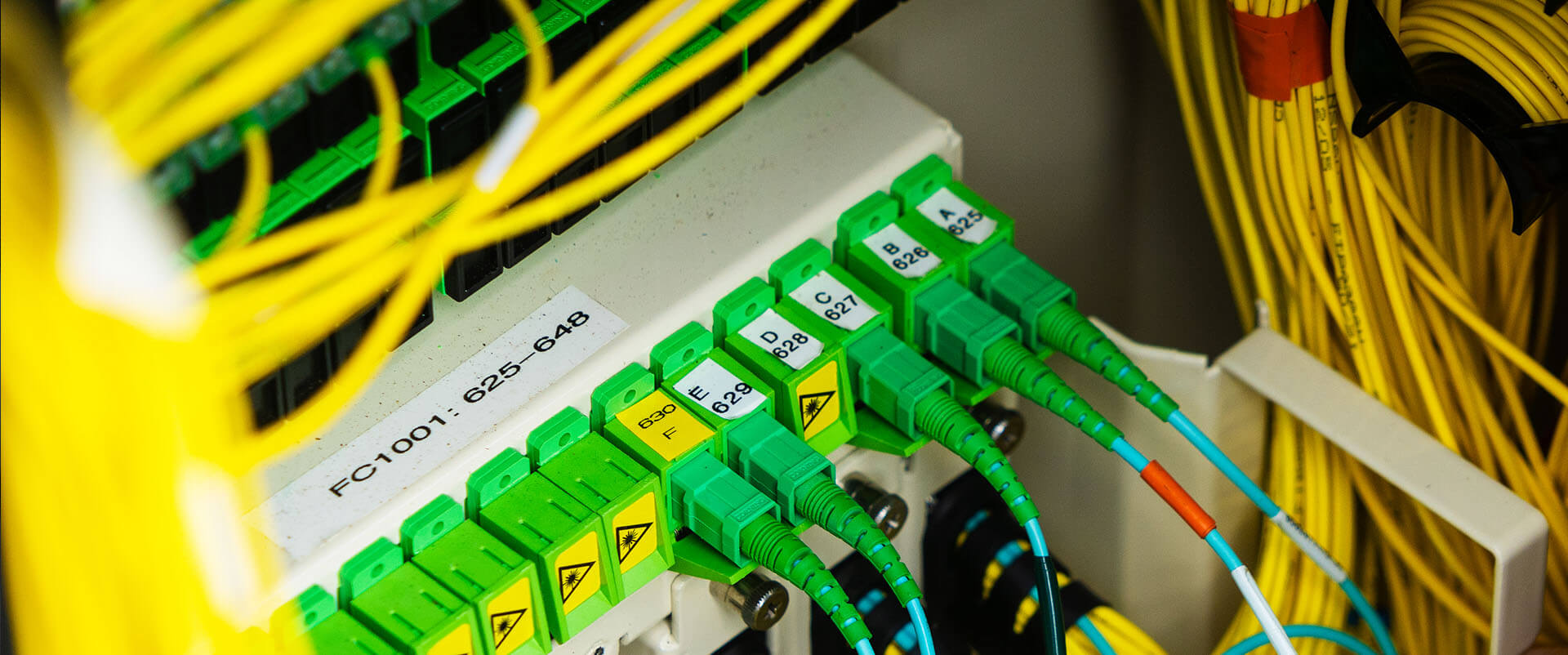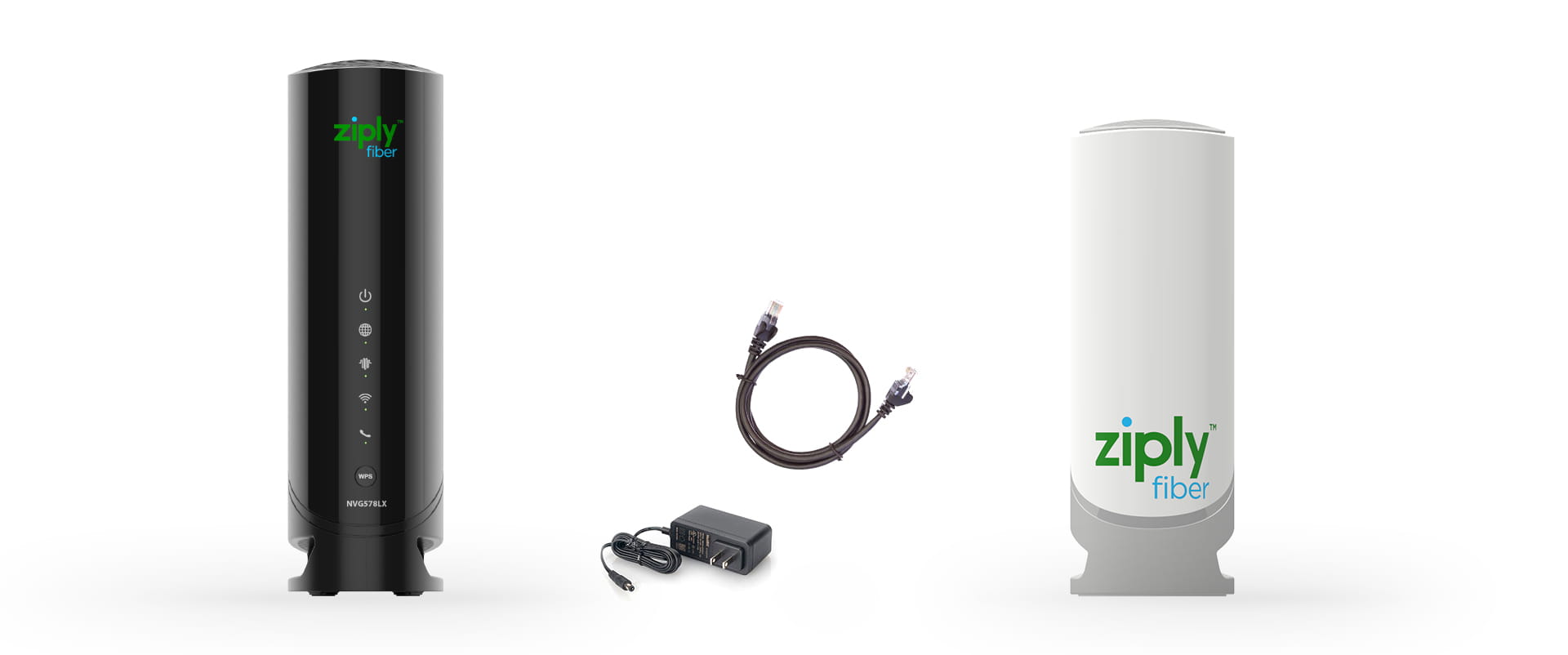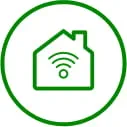Network congestion is a real drag. Literally! When you experience internet network congestion, the site you’re trying to load will seem like it’s taking forever. If you’re streaming a video, network congestion might cause it to cut out, buffer or become pixelated on your screen.
Network congestion primarily affects cable and copper DSL internet. The best way to speed up your connection so you never have to deal with choppy video or slow page loads is to switch to fiber internet. If you’re unable to switch to fiber (probably because it’s not available in your area yet), there are a few things you can do to speed up your connection.
What is network congestion?
Network congestion occurs when an internet network is tasked with sending and receiving more data than it was designed to handle. We say this network is “congested” when the volume of data being sent meets or exceeds the capacity of the network.
Think of it like a highway. When the road is clear, everyone can drive at a normal speed and avoid traffic jams. But when there’s more traffic, like around rush hour, cars move slower or even come to a standstill at times.
Likewise, information travels along network paths in what we call data packets. The data packets contain chunks of information that come together as a whole when they reach the final destination (that is, your screen). You can think of data packets a bit like the cars on the highway: if too many data packets are traveling along the network path, the longer it’s going to take for them to arrive on your screen.
And just like highway traffic, congestion happens at peak times, like evenings, when lots of people are going online for streaming, music and video games after a day of work or school. It can also happen at other times, especially if your bandwidth is too low for your needs or if your hardware or software is on the older side. Typically, congestion occurs on cable and copper networks, which are not always robust enough to handle current-day internet usage.
You also need to account for queuing delay, which is a little like reaction time. When you use the internet, you’re sending and receiving data to and from other computers or servers. There’s always a queuing delay between the moment you perform an action online and the moment something happens on screen as a result of that action. The more data being shared across a specific network at a specific moment, the longer this delay.
When there aren’t many other users sending and receiving data on your network, the delay is short or even imperceptible.
However, when a lot of other users are sending and receiving a lot of data across a cable or DSL network (or a few users are sending and receiving large amounts of data), the queueing delays become longer.
What factors impact network performance?
Network congestion manifest in a few common ways. It’s not always that the internet connection “slows down,” although network congestion often makes it feel like everything is slower. The factors that cause congestion can also result in service disruptions that affect the quality of the data transmission across the network.
Bandwidth usage
We hear the term “bandwidth” a lot, but what does it mean? The term goes back to the beginning of measuring electromagnetic frequencies and took on more significance with the dawn of the internet era. When it comes to your internet, bandwidth simply means the amount of data that can travel from one point to another.
When a network has high bandwidth, it offers a larger path that accommodates more data. Conversely, networks with lower bandwidth have smaller paths and can’t accommodate much data without delays in transmission.
During peak usage times (think “internet rush hour”), there might be excess data competing for limited bandwidth on the local network infrastructure. Thus, network congestion can cause bandwidth usage problems. These problems lead to high latency, a.k.a. slowdown.
Latency
While bandwidth is the rate at which data can travel, latency is the time it takes for a given quantity of data, or data packet, to travel from one computer or server to another.
Low latency means it takes less time for the data packet to travel. High latency means it takes longer. Imagine it like a lane closure on the highway: any time a network lacks the bandwidth to adequately accommodate the data packets being sent across it, users will experience higher latency. This is because the data packets don’t have a clear path of travel. They have to wait for the data packets ahead of them to move along before they can arrive at their destination.
For end users, this internet traffic jam makes it take longer to load a website, update a profile, make a purchase, start a video, or do whatever business they’re engaged in online. They’re experiencing higher latency because of network congestion.
Jitter
We’ve all been on video or VoIP calls where there was a noticeable delay between speech and movement. This is called jitter, one of the most bothersome effects of high latency.
Jitter is what causes your face to get stuck in an unflattering expression on a videochat with your coworkers. It can also cause interference while you’re streaming movies, YouTube videos, or live television. Network congestion and the resulting latency is a common cause of jitter, especially if you experience jitter during peak network usage times.
Packet retransmissions
A packet retransmission occurs when a data packet fails to reach its destination. The retransmission occurs after a packet is lost or corrupted during an initial transmission attempt. One common reason why data packets get lost or damaged is – you guessed it – network congestion.
When packets fail to come through and retransmission occurs, the quality of an internet connection diminishes substantially. The experience feels slow, and it can take a very long time to complete tasks that don’t take very long when the network isn’t congested.
Collisions
Similar to packet loss and retransmission, data packets sometimes collide on the network. This happens when more than one sender, or network nodes, attempt to send data at exactly the same moment. The two data packets collide and need to be resent. The effect for the end user is the same: poor network performance and a slower internet experience.
What causes network congestion?
While the root cause of network congestion is too much data and too little bandwidth, different things can cause this scenario to play out. Let’s consider a few of the most common ones.
Excessive traffic
Excessive traffic can occur at the community level or the level of an individual home or business network. On any given network, there’s a limited amount of bandwidth. When the data transfer demands exceed the bandwidth, network congestion is inevitable.
So, how can network congestion occur at the community level? This is the issue we mentioned earlier when we talked about lots of people in a community using the internet at the same time. In many communities with shared high-speed internet infrastructure (common with cable internet connections), many households will attempt to use the network for high-bandwidth activities at the same time. The network quickly gets congested, and the speed of transmission slows down for everyone.
At the level of a home or business network, the same thing can happen on a smaller scale. If too many people are connected to your home’s wireless internet connection and they’re all trying to download large files or stream HD video at the same time, everyone will probably experience delays.
Unwanted traffic
Unwanted traffic refers to things like large file uploads on a small network with minimal bandwidth or intrusive, high-bandwidth advertisements that appear on a website and reduce overall network performance.
Any network that isn’t set up to handle these types of traffic will quickly become congested any time the data transfer demands exceed the available bandwidth.
Misconfigured network
In rare cases, a network becomes congested when it isn’t set up properly. Maybe a network needs to provide faster speeds than those for which it was configured. Or perhaps the wrong devices are being used to manage the network (a slower modem or a wireless router with inadequate power, for example).
When this happens, local networks can experience congestion even under the types of usage scenarios that normally wouldn’t cause problems. To solve for this, call your internet service provider and see if there’s a modem or router upgrade available. They should be able to assess what’s going on or send a technician out to check if needed.
How do I prevent network congestion?
Network congestion is a common problem for homes and businesses using cable internet services. For one thing, peak usage times in communities can diminish performance on individual devices in multiple households. In addition, the high bandwidth demands of activities such as HD video streaming, network gaming, real-time video conferencing and uploading large files can lead to congestion on local networks. As we become more connected to the internet for work, hobbies and entertainment, the more cable and DSL connections are going to come up short on performance.
The best way to prevent all of these problems is to upgrade to fiber internet. Unlike cable, fiber internet offers more than enough bandwidth to support data-heavy online activities. Even during peak usage times, fiber infrastructure is robust enough to handle all of the data packets moving back and forth among network nodes. And because fiber is connected directly to your house, you’re not sharing the network with all the other cable or DSL traffic in the neighborhood. It’s like having your own dedicated lane for your data convoy.
Ziply Fiber operates its network below capacity, too, which means that it leaves extra room on the “highway” so that congestion is impossible no matter how busy rush hour is. The benefits are similar in local networks at homes and businesses. Thanks to the increased bandwidth, latency should be minimal to completely unnoticeable, even when multiple devices on the same network are engaged in high-bandwidth activities.
How do I fix network congestion without upgrading?
If fiber isn’t available in your area and you’re dealing with network congestion, here are some things you can do to reduce its negative impact.
Shut down applications
Is one device on your local network running an application that uses a lot of data? If so, this could be the reason you’re experiencing latency and jitter on other devices connected to your network. Some of the biggest data eaters are social media sites like Facebook, Instagram and TikTok, as well as video streaming services like YouTube and Netflix.
Quit or shut down the bandwidth-heavy application and see if your internet performance improves. Remember that all the devices in your home affect speeds, so you may need to time internet usage with the other people in your household.
Disconnect the device
Maybe there’s a device on your network that’s causing congestion. The problem might not be a specific application on that device; it could be a variety of applications on that device that are running in the background and hogging all the bandwidth.
Examples of these processes include automatic syncing with a cloud server or live tile updates in Windows 10. Activities like these may be going on all the time on different computers connected to your network. You don’t see them, but cumulatively they can slow everybody down. To check what’s going on, go into your system task manager and shut down whatever programs you don’t need.
Update your firmware
You should always keep the firmware on your devices up to date. In some cases, firmware updates can help combat network congestion. They can make your device more resilient when an internet connection slows down, perhaps by quitting or pausing processes on the device to free up more bandwidth.
Get faster, more reliable fiber internet with Ziply Fiber
Stop settling for subpar internet performance. If you’re tired of dealing with an unreliable internet connection that’s plagued by network congestion, Ziply Fiber can help. Our fiber internet plans deliver equally fast upload and download speeds. Most of our customers opt for gig-speed – that's more than enough bandwidth for nearly everything you need and want to do online.






